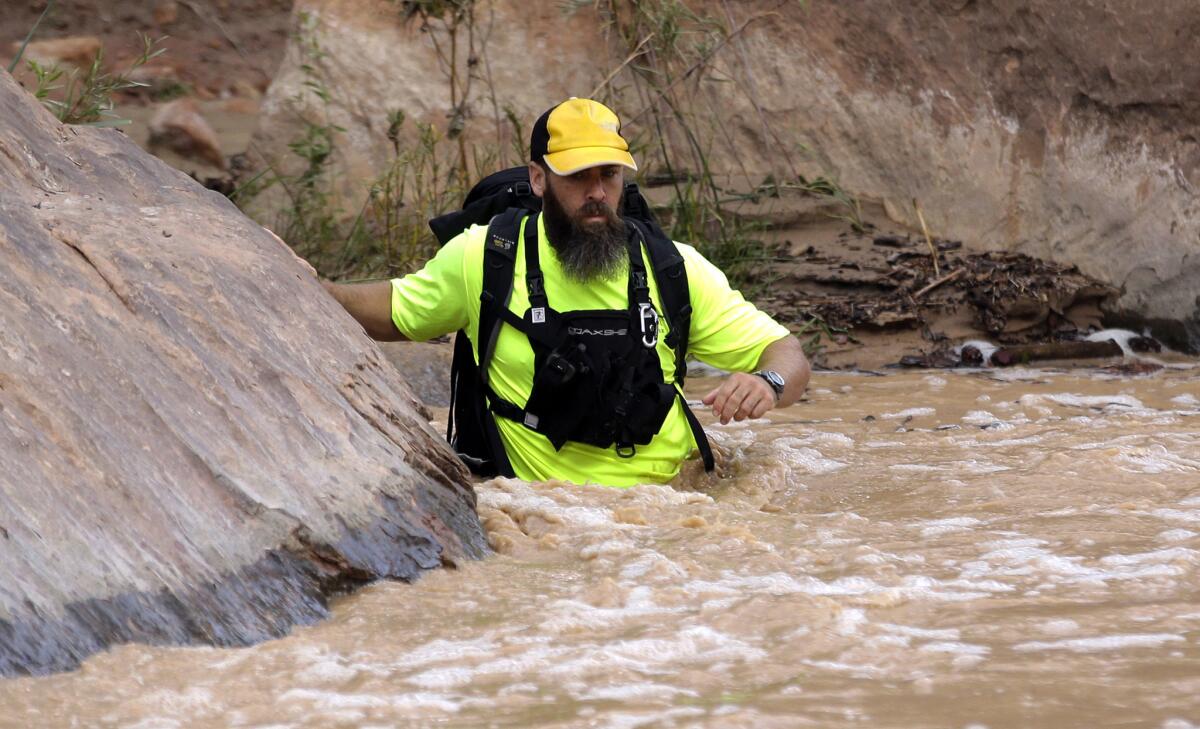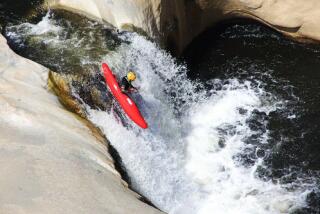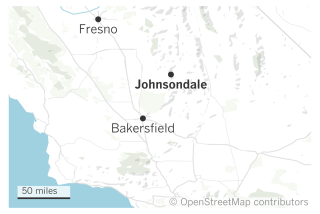Sixth body found after Zion canyon hikers are trapped in flash flood

A member of a search and rescue team wades in the Virgin River during a search in Zion National Park, near Springdale, Utah. Seven hikers who entered a narrow desert canyon for a day of canyoneering became trapped when a flash flood filled the chasm with water, killing at least five of them.
Zion National Park, Utah — Seven hikers who entered a narrow desert canyon for a day of canyoneering became trapped when a flash flood filled the chasm with water, killing at least six of them in Zion National Park in southern Utah, officials said Wednesday.
Known as a slot canyon, the passage is as narrow as a window in some spots and several hundred feet deep. Flooding can turn such canyons into deadly channels of fast-moving water and debris in minutes.
A sudden deluge of rain fueled the flood, which “went from a trickle to a wall” of water, park ranger Therese Picard said.
The fifth and sixth bodies were recovered Wednesday and concerns about more flooding have prevented search-and-rescue teams from entering Keyhole Canyon to look for the last body. Rescue teams with dogs were looking several miles downstream in piles of debris and in shallow ponds of water that form in rocks. Others were wading through waist-high water in the nearby Virgin River.
Officials say the group got a permit to hike the canyon at 7:40 a.m. Monday, before the canyons were closed because of flood warnings issued at 2:22 p.m. Six of the hikers were from California and one from Nevada. All were in their 40s and 50s.
NEWSLETTER: Get the day’s top headlines from Times Editor Davan Maharaj >>
The deadly events happened at the same time flash floods tore through a small community on the Utah-Arizona border just south of the park, leaving at least 12 people dead.
At Zion National Park, the group of seven had arrived to climb, rappel and swim through a half-mile canyon route that takes from one to four hours to complete.
Hikers use climbing equipment to lower themselves into the canyon. There are more steep descents on the course, as far as 30 feet down sandstone walls. Some rappelling routes end in pools of water where canyoneers unhook their equipment and swim out. The canyon walls go as far as the eye can see, and it’s deep enough to stay cool even in July, Picard said.
“It is a water course. You have slick rock that has been eroded. It is dark and cold. Even in July it’s chilly,” she said.
Only 80 people are allowed in per day.
While rangers try to impress upon people the danger of flash flooding during the permit process, once people have entered the canyons, there’s no way to tell them that waters have started to rise, Picard said.
ALSO:
Advocates protest Latina immigrant’s arrest at Texas doctor’s office
Court delays execution of Oklahoma man who claims innocence
Police: No bomb charges against Muslim boy who brought homemade clock to school
More to Read
Sign up for Essential California
The most important California stories and recommendations in your inbox every morning.
You may occasionally receive promotional content from the Los Angeles Times.










